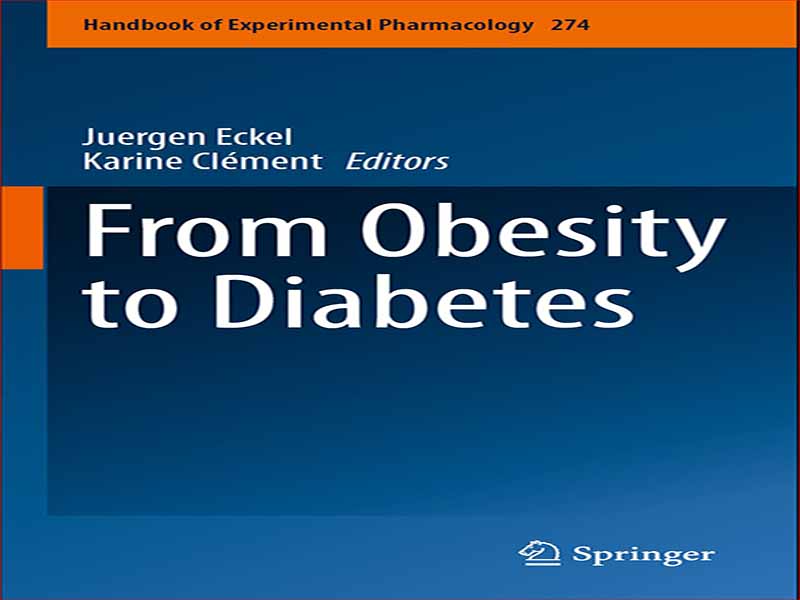چاقی یک عامل خطر اصلی برای ایجاد دیابت نوع 2 و عوارض مرتبط با آن است که نشان دهنده یک بار اجتماعی-اقتصادی عمده برای سیستم های مراقبت های بهداشتی است. شیوع چاقی در سراسر جهان از سال 1980 دو برابر شده است و در نتیجه تعداد بیماران مبتلا به دیابت به طور مداوم در حال افزایش است و بیش از 450 میلیون نفر در حال حاضر از این بیماری رنج می برند. پیشرفت قابل توجهی در درک مسیرهای مولکولی منجر به تجمع بیش از حد چربی به اختلالات متابولیک و در نهایت تظاهرات دیابت و همچنین بیماریهای مرتبط حاصل شده است. با این وجود، رژیمهای درمانی نوآورانه برای مقابله با افزایش اپیدمی عوارض مرتبط با چاقی، به فوریت مورد نیاز هستند. هدف این نسخه از کتاب راهنمای فارماکولوژی تجربی تجزیه و تحلیل بینش های جدید در مورد پاتوفیزیولوژی چاقی، بررسی برخی تغییرات اندام و گفتگوی متقابل بین اندام مختل، رمزگشایی پیوندهای پیچیده با دیابت و عوارض آن، و جمع آوری جدیدترین اطلاعات است. در مورد استراتژی های جدید برای پیشگیری و درمان چاقی و دیابت. متخصصان برجسته در زمینه تحقیقات چاقی و دیابت بینش عمیقی در مورد وضعیت فعلی هنر ارائه می دهند و تلاش های اساسی برای تأکید بر مسیرهای آینده انجام داده اند. فصل های جداگانه به نقش حیاتی چاقی و به طور خاص روده و بافت چربی برای پاتوفیزیولوژی دیابت و عوارض آن می پردازند، رویکردهای مختلف اصلاح سبک زندگی را پوشش می دهند و جدیدترین پیشرفت های داروهای جدید برای چاقی و دیابت را برجسته می کنند. در واقع، برای سال ها، تنها چند راه حل دارویی برای بیماران مبتلا به چاقی در دسترس بود، اما این به سرعت در حال تغییر با مولکول های جدید در خطوط لوله دانشگاهی و دارویی است که در آینده نزدیک در دسترس خواهد بود و امیدواریم زندگی بیماران را تغییر دهد. ما مطمئن هستیم که مجموعه مقالات فعلی به درک عمیقتر نقش حیاتی چاقی برای انواع بیماریهای متابولیک کمک میکند و در عین حال ممکن است بحثها و تصمیمگیریهای آینده در مورد توسعه داروهای نوآورانه و رویکردهای درمانی را تحریک کند.
Obesity is a major risk factor for the development of type 2 diabetes and its associated complications, representing a major socio-economic burden for healthcare systems. The worldwide prevalence of obesity doubled since 1980, and as a consequence, the number of patients with diabetes has been continuously rising with more than 450 million people suffering from this disease at the present time. Substantial progress has been made in understanding the molecular pathways leading from excessive fat accumulation to metabolic perturbations and finally diabetes manifestation as well as related comorbidities. Nevertheless, innovative treatment regimens are urgently required to cope with the epidemic increase of obesityassociated complications. This edition of the Handbook of Experimental Pharmacology aims to analyze new insights into the pathophysiology of obesity, to examine some organ alterations and perturbed inter-organ cross-talk, to decipher the complex links to diabetes and its complications, and to collect most recent information on new strategies for the prevention and treatment of obesity and diabetes. Leading experts in the field of obesity and diabetes research provide deep insights into the current state of the art and have made substantial attempts to emphasize future directions. Individual chapters address the critical role of obesity and specifically the intestine and adipose tissue for the pathophysiology of diabetes and its complications, cover different approaches of lifestyle modifications, and highlight most recent developments of novel drugs for obesity and diabetes. Indeed, for years, only a few pharmacological solutions were available for patients with obesity, but this is changing rapidly with new molecules in the academic and pharmaceutical pipelines that will be available in the near future and hopefully change patients’ lives. We are confident that the current collection of papers will contribute to a deeper understanding of the critical role of obesity for a variety of metabolic diseases, and may at the same time stimulate future discussion and decision making regarding the development of innovative drugs and therapeutic approaches.
این کتاب را میتوانید بصورت رایگان از لینک زیر دانلود نمایید.
Download: From Obesity to Diabetes




































نظرات کاربران